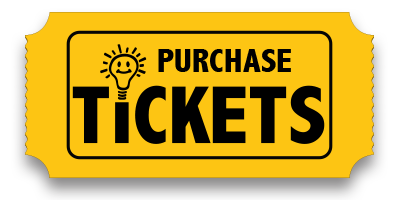Spy Science
Secret Agent, Super Sleuth, Detective, Inspector, Spy. No matter how you name it, there are certain talents and skills these individuals need. If you have always dreamed of dressing up as an alter-ego, using your detective skills, or practicing your powers of observation to stop crime and save the day, this day is for you! We’ve created activities that all have a Spy theme. These activities include things that will help your child develop fine and gross motor skills, problem-solving and engineering skills, and can help them engage in cooperative play, while fostering creativity and perseverance. Each theme also comes with recommended literature and movie connections. Feel free to throw in your own activities that might relate, and don’t forget to post your results to social media and tag @discoverymuse to share with everyone else!
Art Activity/Fine Motor Activity – Secret Agent ID Card
For this activity, you’ll need to collect art materials, small rectangles of paper, and your creativity! Costumes and props, welcome!
Directions

- Cut your paper to be about the size of an ID card.
- Using your art materials, design your own secret agent card.
- Draw a picture of your Secret Agent identity. This could include your costumes/props, or look non-descript.
- Consider including Name, Alias, Agent #, Rank, Classification/Clearance Level, Agent Since, Agency Name, Location, Special Skills, Fingerprint, signature, or identifying information like height, eye color, and hair color.
- You can create a badge holder or use an old wallet to have a special space to store your Secret Agent ID card. Show it off anytime you interview suspects or investigate suspicious happenings!
Science Experiment – Secret Correspondence
Every good spy needs to know how to write secret messages, of course!
Spies, sleuths, and chemistry fans will enjoy this experiment. You will need the following supplies: milk or lemon juice for “ink,” white paper, a q-tip or paintbrush, and a heat source (light bulbs work well, or over the toaster).
Directions;
- Pour your “ink” into a shallow dish.
- Use a q-tip or paintbrush to write a secret message on the paper.
- Allow message ample time to dry.
- Write additional things on the paper, to cover any visible trace of your secret message.
- To reveal your secret message, hold the paper over a heat source. The heat should cause the liquid to brown (it reaches a burning point before the paper does) and reveals your message!
Physical Activity – Laser Maze
Get some of those wiggles out while learning a little about patience, strategic movement and problem-solving. All skills a secret agent needs to have when navigating a laser maze!
- Identify a location for your laser maze. A hallway works great for this, but so does a path among the trees, the patio (obstacles can include furniture, toys, etc) or even your bedroom!
- Collect materials for your laser maze. You will need something to act as “lasers.” This could be yarn, crepe paper, tree branches, or even spare jump ropes stretched across your path! You may also need tape or some other material to attach your “lasers.”
- Create your laser maze. Be creative with your lasers, but make sure you have spaces between that you will fit.
- Usually lasers are used to protect something of value. What will you place at the end of your laser maze?
- Extra challenge – place lasers throughout an entire room. Place the item of value directly in the center of the room. Can you get in and get out without hitting any of the lasers?
Conversation Starters and Research Questions
- Secret agents and spies are generally gathering information from one group and providing it to another. Detectives, Investigators, and Sleuths are usually gathering information to solve a crime. Which would you prefer to do?
- Whether spy or detective, observation skills need to be finely honed. Practice your observation skills by looking at the things in the room for 30 seconds. Then close your eyes and have someone ask you to identify 3 blue items, one item with a light or numbers on it, and how many toys are on the floor. How good were your observation skills?
- Did you know that George Washington had a spy ring that helped gather information for him during the Revolutionary War? This group of people helped him know where the other army was located and what their plans were. Without them, it’s possible the war could have been lost. Are there other famous spies you or your family know about?
Videos and Websites
- Spy Kids CIA website
- Secrets for Junior Spies website
- Kids Spy Network website
- Spy Definition Britannica Kids website
Movie/Literature Connection:
Because we know you’re stuck at home with limited access to movies and books, we tried to compile a list that connects to today’s theme that you might already have in your collection or be able to access online. These include:
Movies:
- Spy Kids
- The Spy Next Door
- Spies in Disguise
- Agent Cody Banks,
- Harriet the Spy
- KC Undercover
- Codename: Kids Next Door
Books:
- Spy Guy: The Not-So-Secret Agent by Jessica Young
- Olivia the Spy by Ian Falconer
- Nate the Great, by Marjorie Weinman Sharmat
- I Spy Book Series
- The Web Files by Margie Palatini
- The Case of the Missing Carrot Cake by Robin Newman
- Nighttime Ninja by Barbara DaCosta
- Harriet the Spy by Louise Fitzhugh
- Mac Undercover: Mac B, Spy Kid by Mac Barnett
- Spy on History: Mary Bowser and the Civil War Spy Ring by Enigma Alberti
- Spy School series by Stuart Gibbs
- Official Spy’s Handbook
- Spy Science: 40 Secret-Sleuthing, Code-Cracking, Spy-Catching Activities for Kids by Jim Wiese
- Book Scavenger series by Jennifer Bertman
- George Washington, Spymaster by Thomas B. Allen
- Alex Rider series by Anthony Horowitz
- The DoubleCross: (And Other Skills I Learned as a Superspy) by Jackson Pearce
Music
- Secret Agent Man by Johnny Rivers
- Theme Songs: Inspector Gadget, Mission Impossible, MacGuyver, Get Smart
- Secret Agents by the Backyardigans


